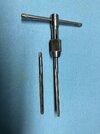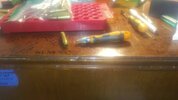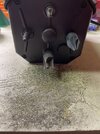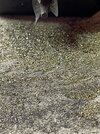You are using an out of date browser. It may not display this or other websites correctly.
You should upgrade or use an alternative browser.
You should upgrade or use an alternative browser.
Primer Pocket Reamer Battle
- Thread starter d31tc
- Start date
armoredman
Member
Nah, I'm good, this tool works perfectly for me.
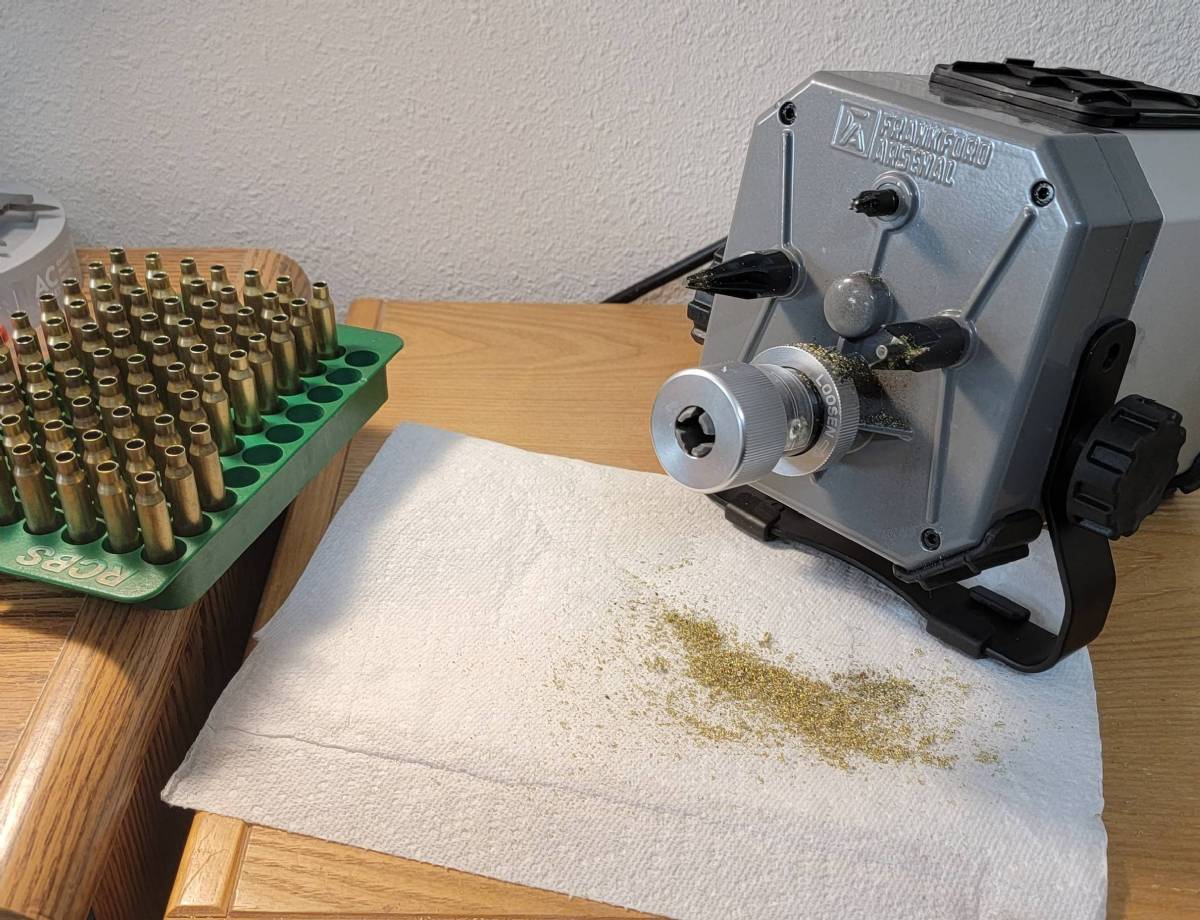

Tested 20 cases with the Lyman and 20 cases with the Burstfire chucked in a drill. Held the case on the reamer with moderate pressure for a count of one second. Tested with the go gauge. 20 for 20 with the Burstfire passed, 14 of 20 reamed with the Lyman passed. Others are reporting their Lyman reamer works great so I’m guessing my sample of one maybe is out of spec. It really isn’t cutting much, even when pushing fairly hard. It just feels like the reamer is spinning free.
I will say, with a functional tool, reaming goes pretty fast (a lot faster than it did before with the Lyman, so unless my hands get tired, I can’t imagine anything other than an automatic case feeder into a swager, i.e. the Lee APP, being faster.
I’m going to prime 20 Burstfire reamed cases and see how that goes, and then move on to finish the 1,000 or so cases remaining.
First photo was reamed with the Burstfire, the second with the Lyman. Again, with my results and others’ reports, my Lyman reamer is not working the same as others.
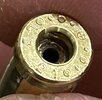
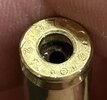
I will say, with a functional tool, reaming goes pretty fast (a lot faster than it did before with the Lyman, so unless my hands get tired, I can’t imagine anything other than an automatic case feeder into a swager, i.e. the Lee APP, being faster.
I’m going to prime 20 Burstfire reamed cases and see how that goes, and then move on to finish the 1,000 or so cases remaining.
First photo was reamed with the Burstfire, the second with the Lyman. Again, with my results and others’ reports, my Lyman reamer is not working the same as others.


AJC1
Member
In the top photo the crimp is cleanly removed at the top, surface you can see. At the bottom of the same photo you can see the step from the crimp which will cause the primer hangup. I want a smooth even chamfer all the way around.Tested 20 cases with the Lyman and 20 cases with the Burstfire chucked in a drill. Held the case on the reamer with moderate pressure for a count of one second. Tested with the go gauge. 20 for 20 with the Burstfire passed, 14 of 20 reamed with the Lyman passed. Others are reporting their Lyman reamer works great so I’m guessing my sample of one maybe is out of spec. It really isn’t cutting much, even when pushing fairly hard. It just feels like the reamer is spinning free.
I will say, with a functional tool, reaming goes pretty fast (a lot faster than it did before with the Lyman, so unless my hands get tired, I can’t imagine anything other than an automatic case feeder into a swager, i.e. the Lee APP, being faster.
I’m going to prime 20 Burstfire reamed cases and see how that goes, and then move on to finish the 1,000 or so cases remaining.
First photo was reamed with the Burstfire, the second with the Lyman. Again, with my results and others’ reports, my Lyman reamer is not working the same as others.
View attachment 1182575
View attachment 1182576
That’s what I use, although I have coveted the Dillon Super SwageThe rcbs crimp remover is neither.... it only chamfers the top of the pocket and doesn't touch any of the primer walls. The reamer and swager do touch the primer pocket which make it possible to overdo.
Exactly, and I have so few I have needed to doI guess it is a matter of scale.
GW Staar
Member
- Joined
- Feb 26, 2009
- Messages
- 3,693
I've used LC brass for 20 years or more, so I've had to swage a lot of brass. IME, it is true that there's a lot of variability. Brass can be way different....the older it is (had a lot of LC 67) the harder the brass and the harder it is to swage, period. There's variable spring back, worse with the old brass, and old brass sometimes shears a thin ring off the the rim, and places it at the bottom of the hole leaving the primer "proud" instead of below the surface.....not often mind you, but it gave me my first slamfire in 7.62.....scared the hell out of me with a double tap.
I started with an RCBS Press-mounted swager.......slow and about 90% effective, but a royal pain to release from the brass on the upstroke on the RockChucker. You have to swage hard to the hilt of the tool or it won't round the edges causing stoppages on a progressive, due to the edge not rounding enough and catching edges.
Next I reamed with the RCBS military pocket reamer tool. Faster to be sure and the progressive worked every time.
Next I bought an RCBS bench swager, which works identical to a Dillon Super Swage, except that I liked how I could mount it and not use up still more space on the bench edge. It's fast too, but again.....effective on some brass.....not perfect on older harder brass......so I used it, uniformed depth, then insured it by just popping the edge with the reamer to insured no "edge catching" on the progressive. Video that illustrates the process....except for the one I tried to swage without depriming first.....doh........and in the video, I'm "uniforming" and cleaning burrs from the flash hole also. I had not progressed to "popping" the edge with the reamer yet. (the raised tool in back left).......ideally, that would be first.....and eliminate the shearing problem.
Finally I tried the APP and it's swager.....the first version of the press and the swager tool.
It is the fastest way, but you need to read the directions carefully and adjust it enough to do the job. A little effort in setup done and it works a good as any of the others or better and certainly WAY faster using the case feeder....and ultimately an electric collator. Nothing else is as fast....not even close.
I did buy the new version of Lee's swager tool for the APP, to see if it's easier to set up, or better in some way than the one that came out on the first APP. But......waiting for a chance this winter to test it thoroughly.
I started with an RCBS Press-mounted swager.......slow and about 90% effective, but a royal pain to release from the brass on the upstroke on the RockChucker. You have to swage hard to the hilt of the tool or it won't round the edges causing stoppages on a progressive, due to the edge not rounding enough and catching edges.
Next I reamed with the RCBS military pocket reamer tool. Faster to be sure and the progressive worked every time.
Next I bought an RCBS bench swager, which works identical to a Dillon Super Swage, except that I liked how I could mount it and not use up still more space on the bench edge. It's fast too, but again.....effective on some brass.....not perfect on older harder brass......so I used it, uniformed depth, then insured it by just popping the edge with the reamer to insured no "edge catching" on the progressive. Video that illustrates the process....except for the one I tried to swage without depriming first.....doh........and in the video, I'm "uniforming" and cleaning burrs from the flash hole also. I had not progressed to "popping" the edge with the reamer yet. (the raised tool in back left).......ideally, that would be first.....and eliminate the shearing problem.
Finally I tried the APP and it's swager.....the first version of the press and the swager tool.
It is the fastest way, but you need to read the directions carefully and adjust it enough to do the job. A little effort in setup done and it works a good as any of the others or better and certainly WAY faster using the case feeder....and ultimately an electric collator. Nothing else is as fast....not even close.
I did buy the new version of Lee's swager tool for the APP, to see if it's easier to set up, or better in some way than the one that came out on the first APP. But......waiting for a chance this winter to test it thoroughly.
Last edited:
Charlie98
Member
You have to swage hard to the hilt of the tool or it won't round the edges causing stoppages on a progressive, due to the edge not rounding enough and catching edges.
See... I think that was my problem with the C&H swage tool... I had to bottom it out to get the edges to swage, and I think the variations in primer pocket depth were causing the bent rims.
Another way to do it, although it would be a 2-step process... would be to swage the pocket, then hit it with a primer pocket uniformer, which would cut any remaining traces of the swage away, while cleaning up the bottom of the primer pocket. That would remove the minimum of metal, for those who think it's important, but still provide a clean pocket entry. Just a thought.
Palladan44
Member
- Joined
- Nov 7, 2020
- Messages
- 1,903
I too worry about taking too much material out of the pocket, but I've yet to see any primer blow outs from loose pockets. (I use a standard pocket reaming tool chucked into an electric drill and just do it by hand. I guess if I start running into problems, I'll consider changing up the method.
Looks like it's your lucky day I was just on the Lee website at the bottom of the page it says Swage and save. You buy the Challenger press or the App and get a free Ram Swage tool! Lee's dealers will likely have even a better price.I'm still in the process of figuring it out. I haven't had the need to do much with crimped pockets. The first time I did, I was using the Lyman reamer. I only did 20 or so cases, spun the reamer until it seemed to spin free of taking brass and still had issues seating primers. I wasn't using a gauge to check those, but I subsequently bought some gauges. After reaming some with the reamer chucked in a drill, I still had some issues. Recently started processing a bunch of my range pickup brass and knew I wanted to try something different than the Lyman reamer. I had an RCBS crimp remover in my inbox ready to buy, but after googling, saw a post on the forum referencing the Burstfire and checked out the Burstfire video. I know it's marketing and they aren't going to post their product failing, but they were comparing it to another reamer, and that showed the experience I was having. They also compared it to what appears to be the RCBS crimp remover, and I didn't want that experience, either.
Why reaming? Right now - because it's cheaper. Lee APP and Lee APP Primer Pocket Swage Kit = $182 VS Dillon Swager = $163 VS. Reamer chucked in a drill = $17
The "Automatic" part looks pretty enticing though. I think the Lee looks like the way to go for fast swaging if I decide to up my game.
Click_Here
Member
- Joined
- Oct 19, 2022
- Messages
- 138
I have the burstfire reamer sitting new until I can get to it. I was (am still) using the RCBS crimp remover. Chucked in a drill it on high speed it does its job but after about 2500 cases I can tell its worn out and doesnt cut as strong as it was new. For me, I did have to apply a moderate amount of pressue and my hands just plain old get tired.
Edit: You really can't mess it up with the RCBS. It wont let you. I tried.
Edit: You really can't mess it up with the RCBS. It wont let you. I tried.
Last edited:
Click_Here
Member
- Joined
- Oct 19, 2022
- Messages
- 138
I’ll try deburring after the Lyman. See if that makes a difference. Next step will be to try priming the brass reamed with the different reamers.
Lyman on the left; Burstfire on the right. They look similar, but are definitely working differently.
From what I read, its this angle that makes it "work" better.
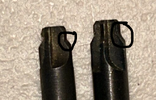
sugarmaker
Member
I’ve tried a bunch different de-crimpers and found them frustrating to use, I ended up with a Dillon 600 and am quite happy.
41 Mag
Member
My experience started with a RCBS swadge set that took about 50 cases before I hit one with a shallow pocket and ruined the ram. After that I picked up the Dillon SS and it worked well enough to get me through several gallon bags of LC '06 and 308.
Then I picked up several flat rate boxes of mixed 223/556 brass that after sorting and cleaning I reverted to the reamer as it was more efficient with the way I was processing the cases as I would load them.
There are a lot of different types that will get ya where you need to be and even with the swadge type or reamers you need to be mindful of how you use them. My little RCBS set up seems to work just fine with the reamer so that is how I'm processing the small cases, as for the bigger ones the Dillon is already set up and ready for when I break out the next giant lot to process. Hopefully what I have will last me and my grandsons can work on that.
Then I picked up several flat rate boxes of mixed 223/556 brass that after sorting and cleaning I reverted to the reamer as it was more efficient with the way I was processing the cases as I would load them.
There are a lot of different types that will get ya where you need to be and even with the swadge type or reamers you need to be mindful of how you use them. My little RCBS set up seems to work just fine with the reamer so that is how I'm processing the small cases, as for the bigger ones the Dillon is already set up and ready for when I break out the next giant lot to process. Hopefully what I have will last me and my grandsons can work on that.
I'm also seeing a slight radius.
Separate question for those with more experience, if you use a primer pocket go/no-go gauge and it passes, how common is it to have issues when priming on a progressive press? I know it depends on the press, but in general. The pieces I've hand primed after using the burstfire seemed to prime just fine.
Lennyjoe
Member
kmw1954
Member
I've tried a couple different makes/models and after doing a few hundred LC I found the easiest for me is to just leave it lay on the ground and not pick it up in the first place. I have access to too much brass that has no crimped primers. Reaming primer pockets rates right up there is trimming.
Click_Here
Member
- Joined
- Oct 19, 2022
- Messages
- 138
I'm also seeing a slight radius.
Separate question for those with more experience, if you use a primer pocket go/no-go gauge and it passes, how common is it to have issues when priming on a progressive press? I know it depends on the press, but in general. The pieces I've hand primed after using the burstfire seemed to prime just fine.
I've had some tight GO's and some loose GO's. But I wouldnt toss either one because of that feeling. Im not gauging every single case either when im processing in bulk thats kind of cWazy.
gifbohane
Member
- Joined
- Nov 7, 2016
- Messages
- 1,179
I have tried everything but the DIllon Swager and found NONE of the methods satisfactory. I do not want to spend $ 150 to find that I have to fiddle with it due to case measurement differences.
The Hornady works Ok but gets dull fast...so I buy them 2 at a time.
The Hornady works Ok but gets dull fast...so I buy them 2 at a time.
Soonerpesek
Member
I have done multiple batches of mixed cases and not once had to adjust it............................for what it's worth..................you only swage the crimp (as you know) and adjustment isn't needed.....find that I have to fiddle with it due to case measurement differences.
I've had some tight GO's and some loose GO's. But I wouldnt toss either one because of that feeling. Im not gauging every single case either when im processing in bulk thats kind of cWazy.
I don’t think I’m crazy
When my reloading room is set up again, I’ll probably be looking at some options posted here.
gifbohane
Member
- Joined
- Nov 7, 2016
- Messages
- 1,179
I would like to understand the Dillon process. A case is inserted into the tool and held by a pin in the open end of the shell. Then the case is pressed onto the tool. If the metal size at the base of the case, from inside to outside varies, as is should, then you would have different depths of swaging. I gotta' be missing something here.I have done multiple batches of mixed cases and not once had to adjust it............................for what it's worth..................you only swage the crimp (as you know) and adjustment isn't needed.....
I've tried a couple different makes/models and after doing a few hundred LC I found the easiest for me is to just leave it lay on the ground and not pick it up in the first place. I have access to too much brass that has no crimped primers. Reaming primer pockets rates right up there is trimming.
It’s early in my reloading journey. I see money on the ground, whether it’s in a case I don’t have to buy or one that can go to recycle. It helps me rationalize the money I spend on other things.
Similar threads
- Replies
- 1
- Views
- 324
- Replies
- 9
- Views
- 2K
- Replies
- 10
- Views
- 2K
- Replies
- 15
- Views
- 495


